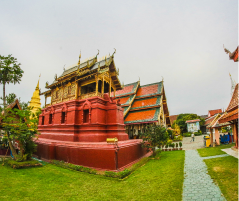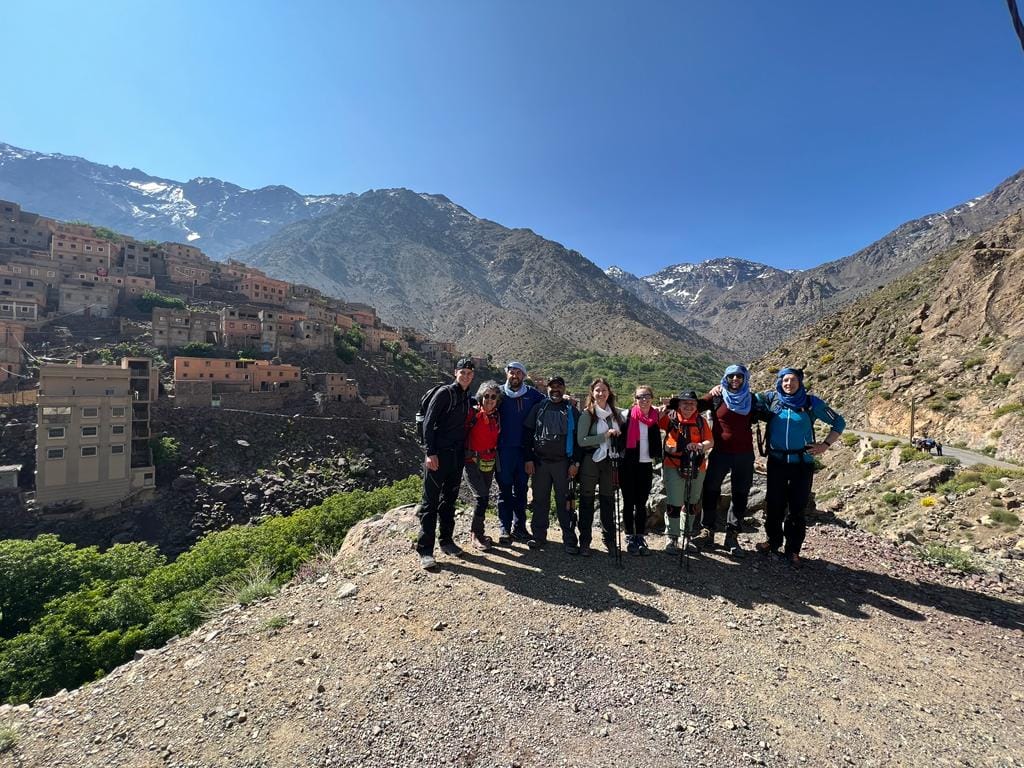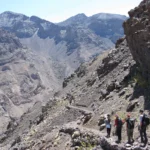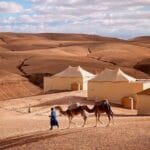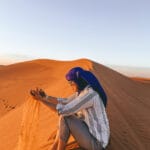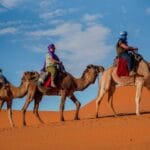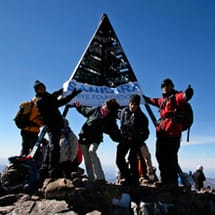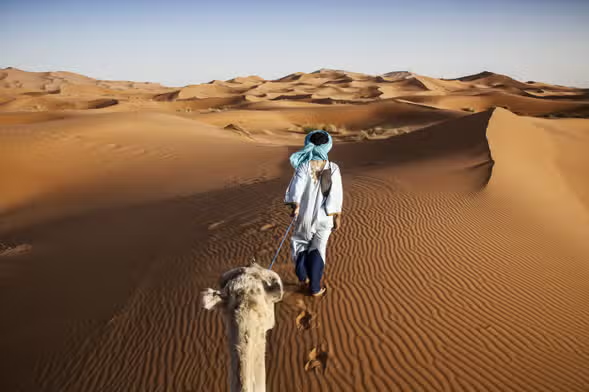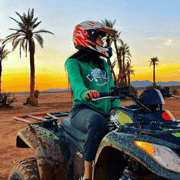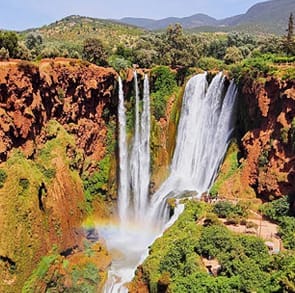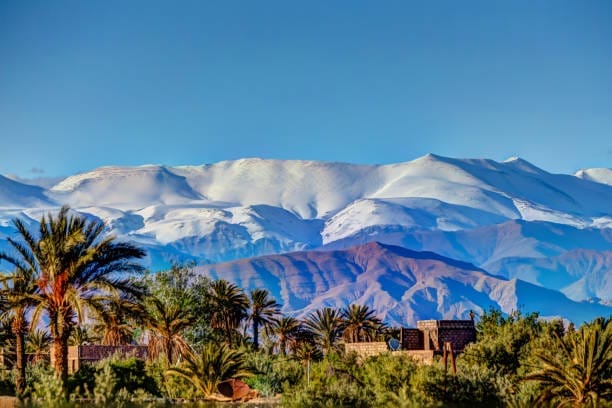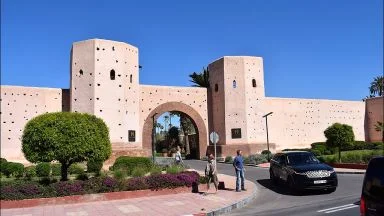Discovering the Atlas Mountains of Morocco
Table of Contents
A Quick Look at the Atlas Mountains
So you’ve got this amazing mountain range right between the Sahara Desert and the Atlantic Ocean. The Atlas Mountains stretch through Morocco, Algeria, and Tunisia, creating a barrier that really influences the local climate. Spanning around 2,500 kilometers, it offers all sorts of terrains like steep peaks, lush valleys, and some jaw-dropping views. Mount Toubkal, standing at 4,167 meters, is the highest spot in the range and draws trekkers from all over.
Key Features:
- Rugged Peaks: Incredible summits that’ll blow your mind.
- Vibrant Valleys: Beautiful oases tucked between the mountains.
- Cultural Richness: Traditional Berber villages packed with history.
Every step you take in the Atlas Mountains is like uncovering a blend of nature and rich cultural heritage.
Weather and Climate in the Region
The climate here really depends on where you are in the mountains. In the lower parts, you’ll find a Mediterranean vibe with warm, dry summers and mild, rainy winters.
Typical Weather Patterns:
- Summer (June – August):
- It can get super hot in the valleys, with temps going over 30°C (86°F).
- If you’re up high, it feels much cooler.
- Winter (December – February):
- The peaks get covered in snow which looks stunning.
- Temps can drop below freezing, so pack accordingly.
Understanding weather conditions is key to having a comfortable trek and enjoying the gorgeous sights the mountains offer through the seasons.
Getting Ready for a Trekking Adventure
Must-Have Gear for Trekking
Before you hit the trails in the Atlas Mountains, making sure you have the right gear is essential. The right stuff keeps you comfy and safe on your journey. Here’s a quick checklist to help you out:
- Footwear: Sturdy hiking boots with good support.
- Clothing: Moisture-wicking layers, insulated jackets, and a rainproof outer layer.
- Backpack: Light and comfy daypack for your essentials.
- Navigation Tools: Maps and a GPS or compass to guide you.
- Safety Gear: A first aid kit, headlamp, and multi-tool.
Having these essentials can turn a tough hike into an enjoyable journey.
Fitness and Training for the Trip
Getting fit for your trek matters too. Start working on a routine that builds up your stamina and strength. Focus on these areas:
- Cardio: Aim for at least 150 minutes a week with activities like running, biking, or brisk walking.
- Strength Training: Train your legs and core with squats, lunges, and planks.
- Hiking Practice: If you can, go for short hikes and slowly increase your distance.
I personally joined a local hiking group and found that it not only boosted my fitness but I learned a lot from seasoned trekkers along the way! Embrace your preparation; it’s part of the adventure!
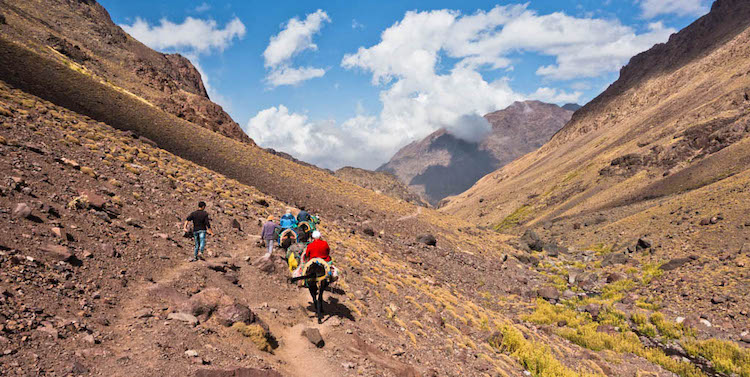
Image Source: www.absolutemorocco.com
Popular Trekking Routes in the Atlas Mountains
Toubkal Circuit: A Challenging Trek to Mount Toubkal
If you’re after an adventure, the Toubkal Circuit is a must! This trek takes you to North Africa’s highest peak, Mount Toubkal, which soars at 4,167 meters. You’ll spend about 3 to 4 days on this trek, where you’ll find breathtaking views that will leave you in awe—both from the heights and the stunning scenery!
Key Highlights:
- Climbing through beautiful valleys and rocky trails.
- Spending nights in mountain lodges to soak up the experience.
- Enjoying panoramic views from the top rewards you after all the effort.
Having completed this trek myself, let me tell you—reaching the summit feels like the ultimate achievement!
M’Goun Massif Trek: Experience Berber Villages and Valleys
On the flip side, if you want a taste of culture, check out the M’Goun Massif Trek. This one mixes nature and local heritage, letting you explore charming Berber villages where you can see traditional lifestyles up close.
Experience Includes:
- Hiking through lush valleys and riverbeds.
- Chances to interact with Berber families.
- Stunning scenery that changes as you walk.
I loved the warmth of Berber hospitality and the enchanting stories shared over a cup of mint tea during my stint there. Every step in the M’Goun Massif reveals more of Morocco’s rich tapestry, in nature and culture.

Image Source: media-cdn.tripadvisor.com
Immersing in Berber Culture and Hospitality
Cultural Experiences Along the Way
When you’re trekking through the Atlas Mountains, it’s not just about the breathtaking views; it’s also about the rich Berber culture that thrives in the area. Engaging with locals along your route opens up unique experiences.
What to Expect:
- Traditional Music: Enjoy local performances with unique instruments.
- Storytelling Nights: Gather around a fire and listen to elders share captivating tales.
- Crafts and Artisans: Discover beautiful handmade goods, from carpets to pottery.
I will always remember the evening I spent in a village sharing stories with a local family over a delicious tagine, feeling that shared humanity.
Staying with Berber Families
If you really want to dive deep into the experience, consider staying in homestays or traditional Berber lodgings. These authentic places not only give you a roof over your head but create a welcoming atmosphere that feels like home.
Benefits of Homestays:
- Culinary Delights: Savor home-cooked Berber meals that are packed with flavor and love.
- Personal Connections: Live alongside locals and gain insights into their daily lives.
- Sustainable Tourism: Your stay contributes to the local economy.
When I stayed in a traditional kasbah, it felt magical—waking up to morning prayers and the smell of fresh bread set the stage for a day of adventure and cultural discovery.

Image Source: acuvrfkwen.cloudimg.io
Wildlife and Natural Wonders of the Atlas Mountains
Discovering Flora and Fauna
While trekking through the Atlas Mountains, you’ll be awed by the variety of flora and fauna that lives in this special ecosystem. The different altitudes create unique habitats, allowing for a rich mix of life.
Wildlife Highlights:
- Barbary Macaque: Catch a glimpse of these playful monkeys in the cedar forests.
- Atlas Gazelle: Keep an eye out for these elusive creatures, symbols of the wild.
- Birdwatching: Over 300 bird species, including the majestic Egyptian vulture.
During my trek, I was lucky enough to spot two Golden Eagles flying overhead, reminding me just how magical nature can be.
Stunning Landscapes and Views
The scenic beauty of the Atlas Mountains is simply breathtaking. Every twist of the trail reveals new views that leave you speechless.
Must-See Views:
- Toubkal National Park: Dramatic valleys, peaks, and striking lakes.
- Imlil Valley: A charming valley filled with terraced fields and quaint villages.
- Ait Bouguemmaz Valley: Known as the Happy Valley, recognized for its lushness and vibrant colors.
Standing at the summit of Mount Toubkal is a defining moment for any trekker—feeling both exhilarated and calm as you take in the vast scenery below. It’s experiences like these that stay with you long after the trek is over.

Image Source: toubkal-trekking.com
Safety Guidelines and Responsible Trekking Practices
Keeping Safe on the Trails
Before you set off on your trekking adventure in the Atlas Mountains, safety should be your top priority for a rewarding experience. A little preparation can go a long way!
Key Safety Tips:
- Stay Hydrated: Always bring enough water and drink regularly.
- Know Your Route: Familiarize yourself with maps and follow marked paths.
- Emergency Packing: Bring a first aid kit, whistle, and flashlight.
- Weather Awareness: Check the forecast each day to avoid surprises.
Having a solid plan helped me tackle tough spots confidently while feeling empowered.
Leave No Trace Principles for Sustainable Trekking
Following the Leave No Trace principles is super important for keeping the Atlas Mountains beautiful for future generations. Sticking to these guidelines helps protect the environment while you enjoy your trek.
Leave No Trace Principles:
- Plan Ahead: Research your trails and rules before you set out.
- Stick to Paths: Stay on established trails to protect the vegetation.
- Dispose of Waste Properly: Always pack out all trash and leftovers.
- Respect Wildlife: Observe animals from a safe distance and don’t feed them.
I’ve made it a point to share these principles with other trekkers, creating a shared commitment to look after the nature we love. These efforts not only keep you safe but also nurture the environment you’re enjoying.

Image Source: trekkingmoroccomountains.com
Planning Your Trekking Expedition
Booking Guides and Guided Tours
When you’re planning your trek through the Atlas Mountains, one of the best things you can do is consider hiring a knowledgeable guide or joining a tour. This not only adds a layer of safety but also enhances your experience thanks to their local insights.
Advantages of Hiring a Guide:
- Local Knowledge: Guides can share fascinating stories and insights into the culture.
- Navigation Help: They’ll make sure you stay on track and don’t get lost.
- Tailored Plans: Guides can customize itineraries based on your hiking level.
Joining a guided tour for my first trek made it even more special with the guide’s stories adding meaning to every step.
Creating an Itinerary and Timeline
A solid itinerary is key for a successful trekking trip. Start by figuring out your fitness level and how much time you have, then tailor your plan accordingly.
Itinerary Essentials:
- Daily Distances: Figure out how far you can comfortably hike each day.
- Rest Days: Give yourself time to acclimatize, especially when climbing higher.
- Key Stops: Plan breaks at significant sights or cultural experiences.
During my trek, having a good timeline helped me balance the tough parts while enjoying the amazing views, making sure I didn’t rush through anything. Planning your itinerary sets you up for an unforgettable adventure in the Atlas Mountains.
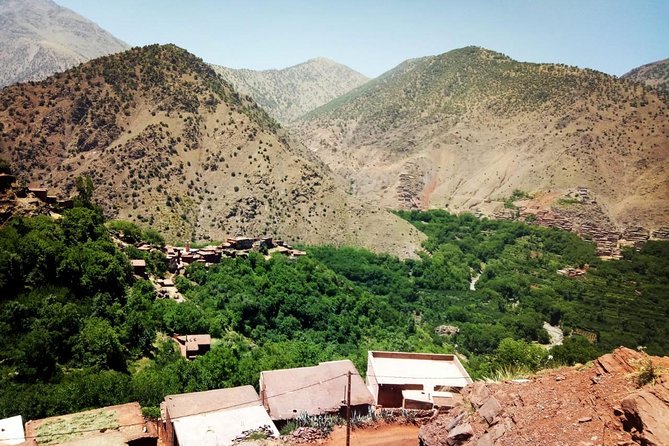
Image Source: veronikasadventure.com
Capturing Memories: Photography Tips for Trekkers
Best Spots for Photos During Your Trek
As you trek through the gorgeous Atlas Mountains, don’t forget to stop and snap some pics of the breathtaking views! There are plenty of spots to showcase the area’s beauty.
Must-Visit Locations:
- Mount Toubkal Views: Capture sunrise lighting up the peak from Toubkal Refuge.
- Imlil Valley: The terraced fields with mountains in the backdrop make for stunning shots.
- Ait Bouguemez: Known as the Happy Valley, it’s fantastic for vibrant valley photos.
I still remember setting up my camera at sunset in Imlil Valley; the colors were out of this world, and taking those pictures made me feel great.
Camera Gear and Techniques for Great Shots
To get the best of what you see, bringing the right camera gear and knowing a few techniques can really help.
Essential Gear:
- DSLR or Mirrorless Camera: Great for adjusting settings as needed.
- Wide-Angle Lens: Perfect for capturing expansive landscapes.
- Sturdy Tripod: Super helpful for stable shots, especially in low light.
Photography Techniques:
- Golden Hour: Shoot during sunrise or sunset for softer lighting.
- Rule of Thirds: Compose images by diving the frame into thirds for a balanced look.
- Experimenting Perspectives: Try different angles or heights for unique views.
When I started using these tips, my photos really transformed from ordinary to incredible. Remember, every click captures the story of your unforgettable trek through the Atlas Mountains!
